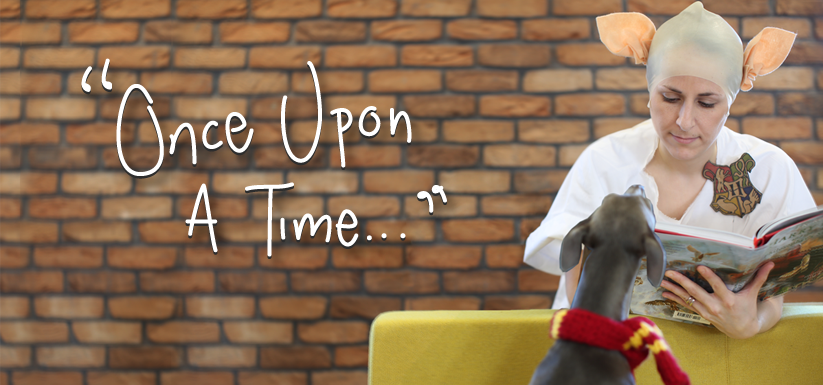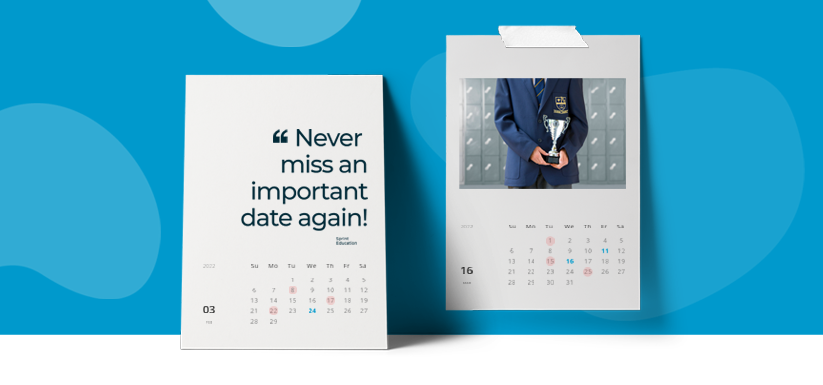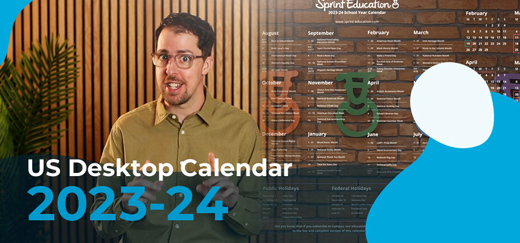How Your Story Will Attract Teachers
How Your Story Will Attract Teachers
The Power of Storytelling (and how it helps you sell more to schools)
The Power of Storytelling (and how it helps you sell more to schools)

Stories have a huge influence in everybody's lives. Be it the morning news, your lunchtime email catch-up, or the book you'll read before bed tonight (or the book your kids ask you to read for the tenth time in three days), everyone's exposed to some kind of daily tale.
Delve deeper and you'll realise storytelling extends much further than this.
A list of statements gives you information, but it's the power of storytelling that unlocks and influences your thoughts and opinions and decisions.
Take, for instance, Dogs Trust. I could tell you they care for 15,000 dogs a year, or I could point you in the direction of their award-winning, story-based #SomeoneSpecial campaign, which increased annual adoptions by a huge 8% (and increased how often I cry at TV adverts by about 300%). I can take a good guess at which is more likely to get you running down to the shelter.
They got to their happy ending by humanising the brand and everyone (and every dog) involved in it - including the audience.
It took you on a rollercoaster of empathy, sadness, and ultimate joy - like any good book should. And that's the kind of stance you need to be taking with your selling to schools strategy.
For your business to truly excel and grow, you must communicate your story to your target audience throughout your entire marketing plan.
Executed perfectly, your audience should find your campaigns as gripping as their favourite book series - leaving them more eager to buy from you as a loyal, long term client waiting for the sequel. Now, it's time to turn the page and tell you how you can do just this…
The Characters Every good story has a strong protagonist - that's you, the hero who wants to provide schools with the products and services they've spent the entire book looking for.
Your colleagues are your trusty sidekicks (don't tell them I've called them that), and you'll of course all have agreed how the plot will go. Not even Harry Potter could become The Boy Who Mastered Selling to Schools had Ron and Hermione been on an entirely different wavelength with their edu-marketing strategy.
That's because there's no 'I' in story. You probably wouldn't get past the first page of a book that just talked about the main characters and how great they are.
You need the hook that'll draw the reader in through emotion and curiosity, the part that gives them a reason to pay attention and read on.
They don't want a book about why you, an ex-teacher, build playground structures that last for twenty years. They want to read why you, an ex-teacher, noticed how their pupils had unimaginative playgrounds and went on a successful quest to provide pupils with exciting outdoor equipment.
Sprint's own story begins with Guy our Co-Founder, sat at his desk as the Head of Music at Tewkesbury School, when he received some awful marketing material. Guy had already written, published, and successfully sold his own GCSE Music Text Book into schools himself, and realised how off the mark this marketing was. And to make matters worse this poor education business had paid a "professional" marketing agency to create it for them. He knew then that he could make a huge difference to the education marketing world, help companies sell more, and ensure teachers received quality marketing offering only the best education products and services available. The rest is history.
The Plot You're going to want one for your entire strategy. One simple email on its own probably won't do the job. If you've only got one email then how will you go on to tell your audience the relatable story of how you overcame funding difficulties with your playground business, or how you've been commended by Damian Hinds, or the tale of how you expanded your business overseas? Think of your emails as actual chapters.
Plan all of your emails out at once to make sure they all fit together in a sequence to form your masterpiece strategy. Then, treat them as if you would a whole book. The first few chapters will introduce you and your company, but give reason for teachers to want to commit to reading your future emails.
Your mid-strategy emails should be rife with excitement and action - be it in the form of enticing offers, brand-new products, or illustrations and photos that wow. And, finally, you should tie up your campaign with a plain text email or two to ask if, at the end of your story, they're ready to buy from you.
Maybe you can even tease a new product or offer that you plan on promoting in your next strategy to keep them loyal and generate excitement for your campaign's sequel?
The Continuation There's very little that is more disappointing than when a great book has a half-hearted sequel, or one chapter full of action and suspense is followed up by an anticlimactic part two. So, if you're about to go to the effort to make sure your story is worthy of The New York Times Best Sellers list in your emails, you'll have to make sure it can hold its own throughout the rest of your marketing. For your business to truly excel and grow, you'll need to continue the camaraderie with your audience.
Social media was born for sharing stories - and, more importantly, connecting with your audience on a personal level to hear and respond to their stories.
Pigeon Hole - or programmatic, personalised mail sent after the teacher has interacted with your email - is almost like an additional, bonus chapter of your story that only a select few are treated to, meaning you can share the exact part of your story that'll pique your audience's particular interests the most.
Of course, we can't forget about the two other major elements of your marketing - your website, and direct teacher contact.
When they click through to your website, thoroughly wowed by your email, the story should continue through plenty of photos of your team and an active blog discussing your company's latest goings-on and product updates.
Then, after being blown away by how warm and friendly your website is, they'll make direct contact with their new favourite author. Remember that by this point the teacher has heard several of your stories, seen photos of you and your colleagues, and read your blog so know exactly what you're getting up to.
They'll know you like an old friend, and will just be putting a voice to a story - so make sure your dialogue is just as warm and friendly as the story, with no plot holes and no vague endings, leading to your happy ending where you and your new teacher friend walk happily into the sunset having sealed the deal.
The Conclusion Of course, you'll have to have your audience firmly in mind throughout every step of your strategy.
What's the point in writing a bestseller if no one's there to read it?
If you're looking to sell your IT software packages to IT heads, then make sure your story's primary focus is how you've been able to bring cutting-edge yet pupil/teacher-friendly technology into classrooms.
If it's the bursar, mention this but focus on the low costs, long warranties, and free installation. For the SMT, tell them how it benefits other curriculum subjects and reduces staff workload.
If you'd like to discuss how we could help you achieve your happily ever after with your next school marketing campaign, just get in touch with the team - we'll be like your “fairy god-marketers”.
Tags
Marketing Strategy
Similar Articles


Expert Tips on School Sales Success Before the New Year
Video insights on standing out this November and December from our education marketing team


The Key Dates for Your Spring Marketing Calendar
Learn the must-know spring dates you need in your education marketing calendar to make more sales this quarter.


Expert marketing to K-12 support and solutions
Expert marketing to K-12 solutions
Email Principals, Teachers, and District Staff Inboxes
Email teachers and staff inboxes
Sell More to US and Global Schools and Districts
Sell more to schools and districts
































